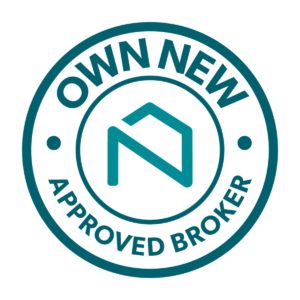What is a Shared Equity Mortgage?

In recent years it has become increasingly difficult for people to get onto the property ladder, with mortgage lenders requiring large deposits and house prices continually increasing. In order to enable first time buyers to be able to afford a property, the government introduced a FirstBuy shared equity scheme in 2011. This approach involved the homebuyer taking an equity loan, so they could have enough money to make up the deposit. In exchange for providing the loan, a share of the equity in the house is paid.
How a Shared Equity Mortgage Works
There are a few different variations of shared equity mortgage, as well as the government’s initiative, which has now evolved into the Help to Buy scheme, some house developers and local authorities have offered shared equity schemes.
They all work on the basis that the lender provides an equity loan so that the buyer does not need to save up a large deposit. So, instead of saving up 25% of the value of the home for a deposit, you can borrow 20% as an equity loan and just pay the 5% down.
The Help to Buy shared equity scheme is interest-free for five years, allowing the homebuyers to have a smaller monthly mortgage payment for that period, so it is more affordable for them. After those five years, they will start to pay interest on the equity loan and after the mortgage term finishes or the property is sold, the lender would be entitled to 20% (or however much the loan was) of the value. Therefore, if the property has increased in value, the lender would receive more money back than they lended, as well as the interest.
The Help to Buy scheme replaced the FirstBuy scheme, opening up the scheme to people that were already homeowners, to make moving to their next house more affordable. The scheme is currently only available for those who are purchasing a new build home and the circumstances are different across the different countries in the UK.
Free phone and video consultations are provided in the U.K.
Get StartedHow a Help to Buy scheme works
Based on a property value of £250,000, the homebuyer would need to put down a deposit of at least 5% and arrange a mortgage of 75%. The remaining 20% is provided in the form of a government equity loan.
For the first five years, you would be paying your mortgage only. In the sixth year, you start paying off the equity loan and a fee of 1.75%. Once you have paid off your mortgage over the agreed term, you would then pay off the 20% equity loan which would be based on the property’s value at that point. Therefore, you will be sharing any equity that is in the house over that 25-year period, or however long your term is.
What is a Partnership Mortgage?
There is also a Partnership Mortgage which is another type of shared equity mortgage, which is different to the Help to Buy, as it provides an interest-free loan and you will usually have a mortgage loan from one lender and a shared equity loan from another lender.
It is available to people who are remortgaging as well as people that are first time buyers or home movers, as long as they have at least 80% equity in the home they are remortgaging.
As an example, if you were getting a mortgage for £300,000:
- You would need a deposit of 20% – £60,000 (can be in the form of current equity)
- You would take out a repayment mortgage for 60% – £180,000 (and pay the interest on that)
- You would also take out a 20% partnership mortgage – £60,000
Although you would not be paying interest back on the partnership mortgage, you would need to pay it off in full at the end of the term. You would also be required to pay the partnership mortgage lender 40% on any value increase on your home. Therefore, if your home increased in value by £100,000 over the agreed 25 years, they would be entitled to £40,000.
So, you would be paying back your mortgage of £180,000 plus the interest on that loan. You would also pay the 20% partnership mortgage back and 40% of the price increase in your home.
See What Our Clients Have To Say
Advantages and Disadvantages of a Shared Equity Mortgage
There are several advantages and disadvantages of taking a shared equity mortgage out that you should consider before deciding if it is the best option for you:
Advantages
Affordability It can help homebuyers afford a home at a value that they would otherwise be unable to get. With banks having lending criteria that would require a higher combined income, or a large deposit to be paid, the only way for some people to afford the new home price would be with shared equity.
Lower payments for first five years With the first five years being interest-free in the Help to Buy scheme, the monthly mortgage payments are more manageable than if the applicant had taken out a standard mortgage for 95% of the property value. Given that there are a lot of costs involved in buying a home, plus new furniture and other typical expenses of moving into a new home, it would make those first five years easier to afford.
Requires a smaller deposit For many people, saving up a 20% deposit is not a realistic option, so the shared equity mortgage provides the help they need with the deposit. Saving up a big deposit is the biggest barrier for most people trying to get onto the property ladder, so the shared equity mortgage provides an opportunity to buy a house without a huge deposit that could take years to save.
Access better mortgage deals With a shared equity mortgage in place you can get better mortgage deals based on your better Loan-to-Value position.
Disadvantages
Paying back more Due to the nature of the agreement, you could end up financially worse off than if you had taken out just the repayment mortgage. As well as paying the repayment interest, you will be paying the loan and its interest and if the house has gone up in value, the loan amount you need to repay is more than the original amount.
Lose out on equity – If house prices rise considerably, the lender will be making a good profit from the loan, at your expense. If they provide a 20% equity loan based on a £200,000 property value, but the value increases to £300,000 they will get 20% of the increased value.
Difficult to move home It can make it much more difficult to move home, as you have an agreement in place that is based on the agreed term. If you sold the house before the term ends, you would need to settle the loan at 20% (or your agreed amount) of the value at that time, unless you have a staircase repayment in place.
Is a shared equity mortgage right for you?
This is a decision that you cannot take lightly, as it impacts your financial position for the long-term future. If you are happy that the advantages of being able to afford your home now outweighs the disadvantages of being financially worse off compared to a standard repayment mortgage, then it probably is right for you.
It is important that you understand the financial differences between taking just a repayment mortgage and taking out a shared equity mortgage on top, before you make any decisions. Boon Brokers would be happy to discuss the advantages and disadvantages with you in greater detail and run through other options that are available.
What’s the difference between shared equity and shared ownership?
People often get confused between shared equity and shared ownership. With shared ownership, you will own just a percentage of the property. For example, you would own 75% and the housing association owns 25%. You would have a mortgage on your 75% and would pay rent on the 25%. There is an option for the homeowner to ‘staircase’ or in other words, buy the percentage of the property owned by the housing association.
With shared equity mortgages, the property is 100% owned by the buyer. They are just taking out an equity loan to pay the remaining amount of the mortgage.
Conclusion
Shared equity mortgages have become a popular method for homebuyers to afford their next home, or to get onto the property ladder. Although there are more risks regarding how much they could end up paying back, for many people it is the most affordable way to buy the home that they want now, rather than waiting years to save up a deposit, or for their income to increase.
Gerard BoonB.A. (Hons), CeMAP, CeRER
Gerard is a co-founder and partner of Boon Brokers. Having studied many areas of financial services at the University of Leeds, and following completion of his CeMAP and CeRER qualifications, Gerard has acquired a vast knowledge of the mortgage, insurance and equity release industry.Related Articles
- Getting A Joint Mortgage With Your Parents
- Remortgage Or Equity Release
- What Is A 100% Mortgage
- What Is An Offset Mortgage?
- What Is A Mortgage Illustration?
- What Are Solicitor Searches?
- How To Improve Your Chances Of Getting A Mortgage
- Purchasing A Property With Shared Ownership
- Can I Overpay My Mortgage?
- Should I Use A Broker Or Go Direct?
- How To Get A Mortgage With A New Job
- What Documents Are Needed For A Mortgage?








